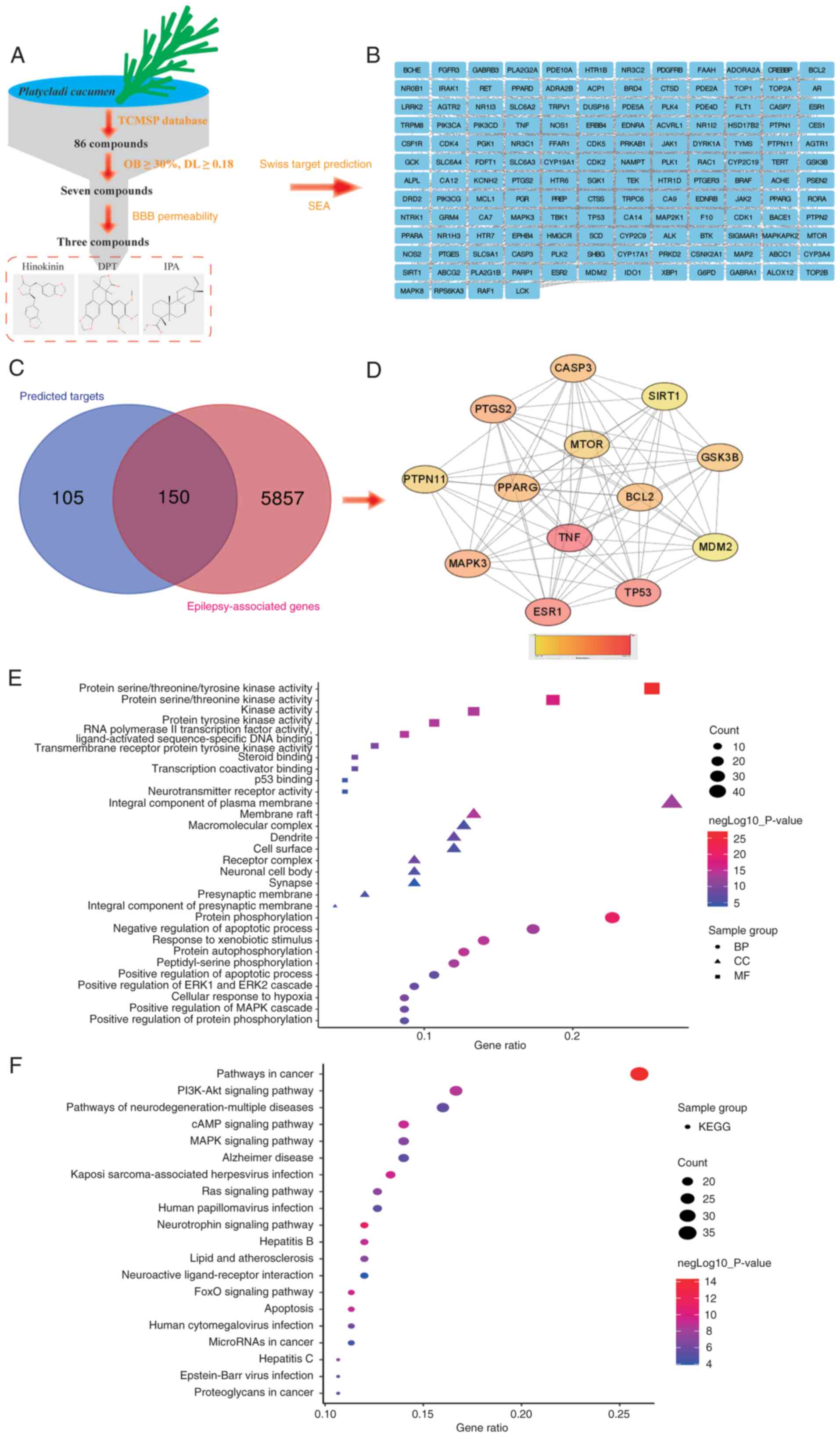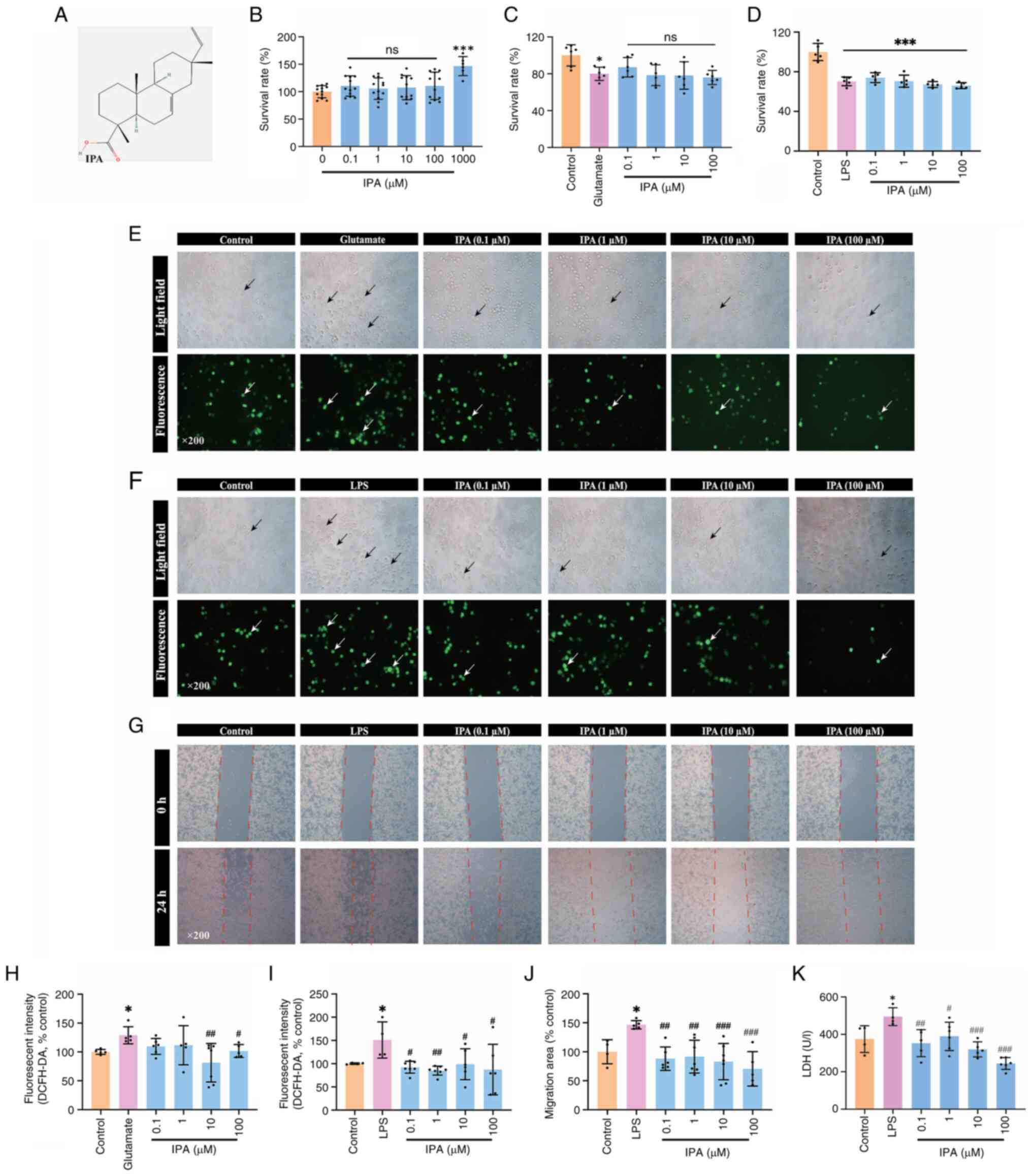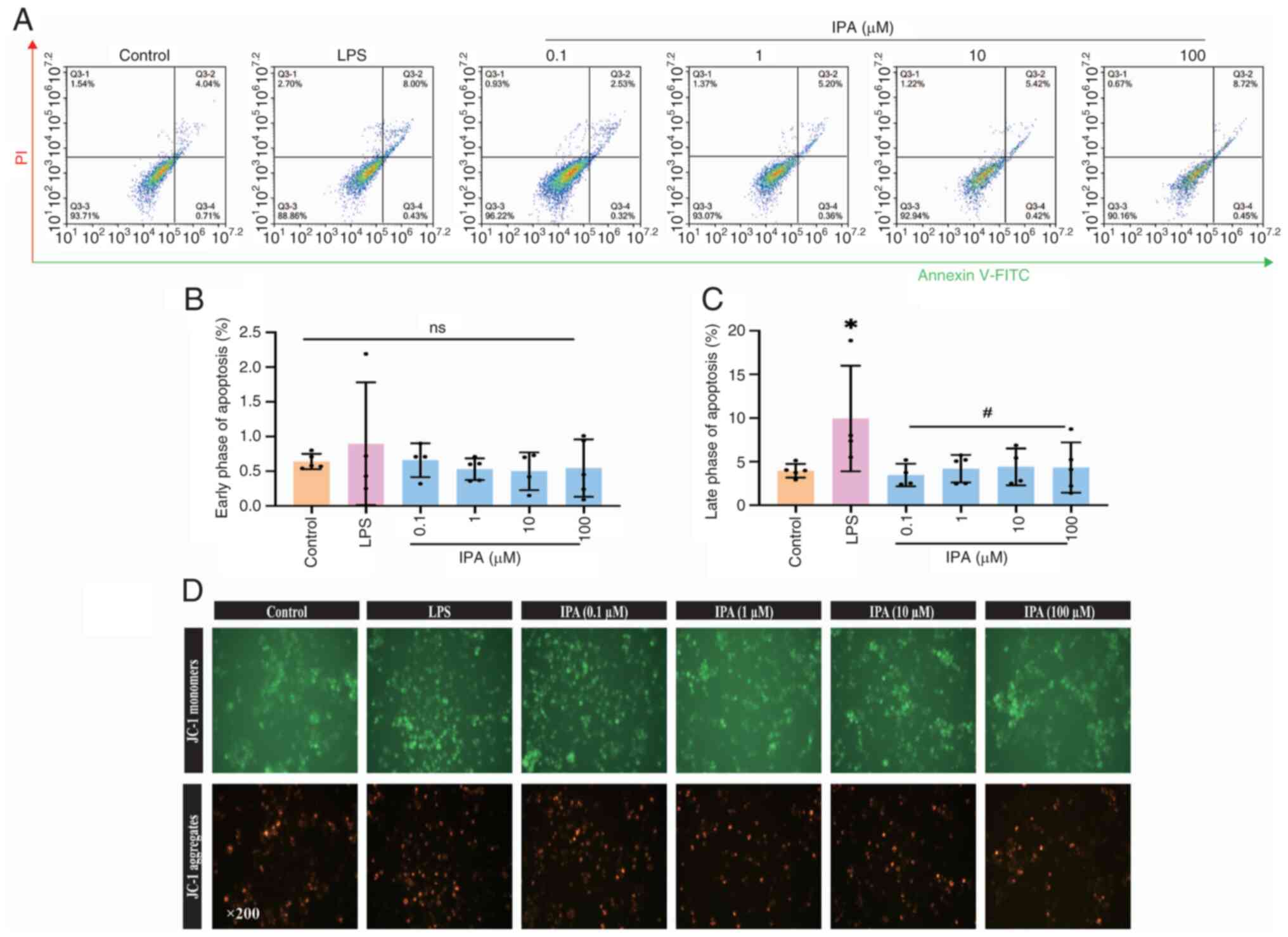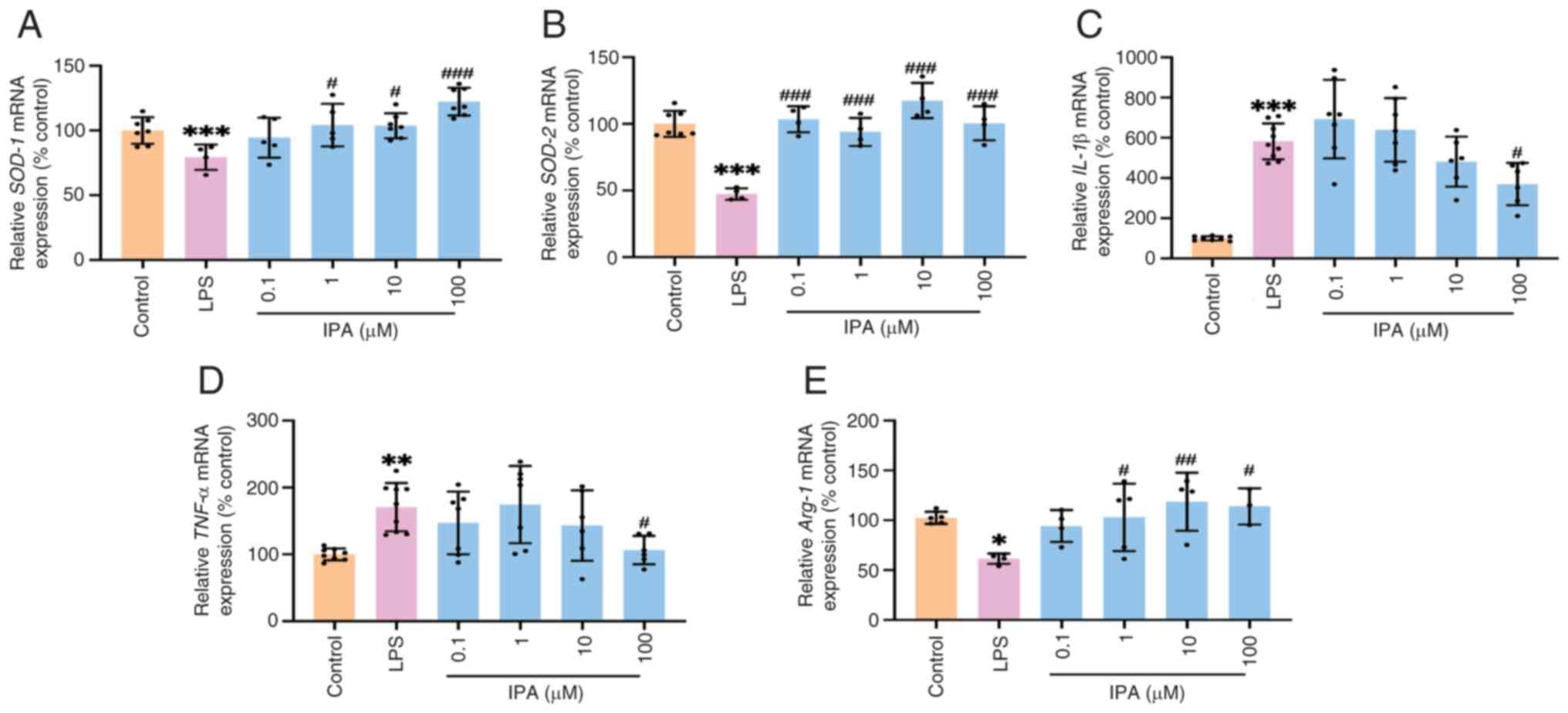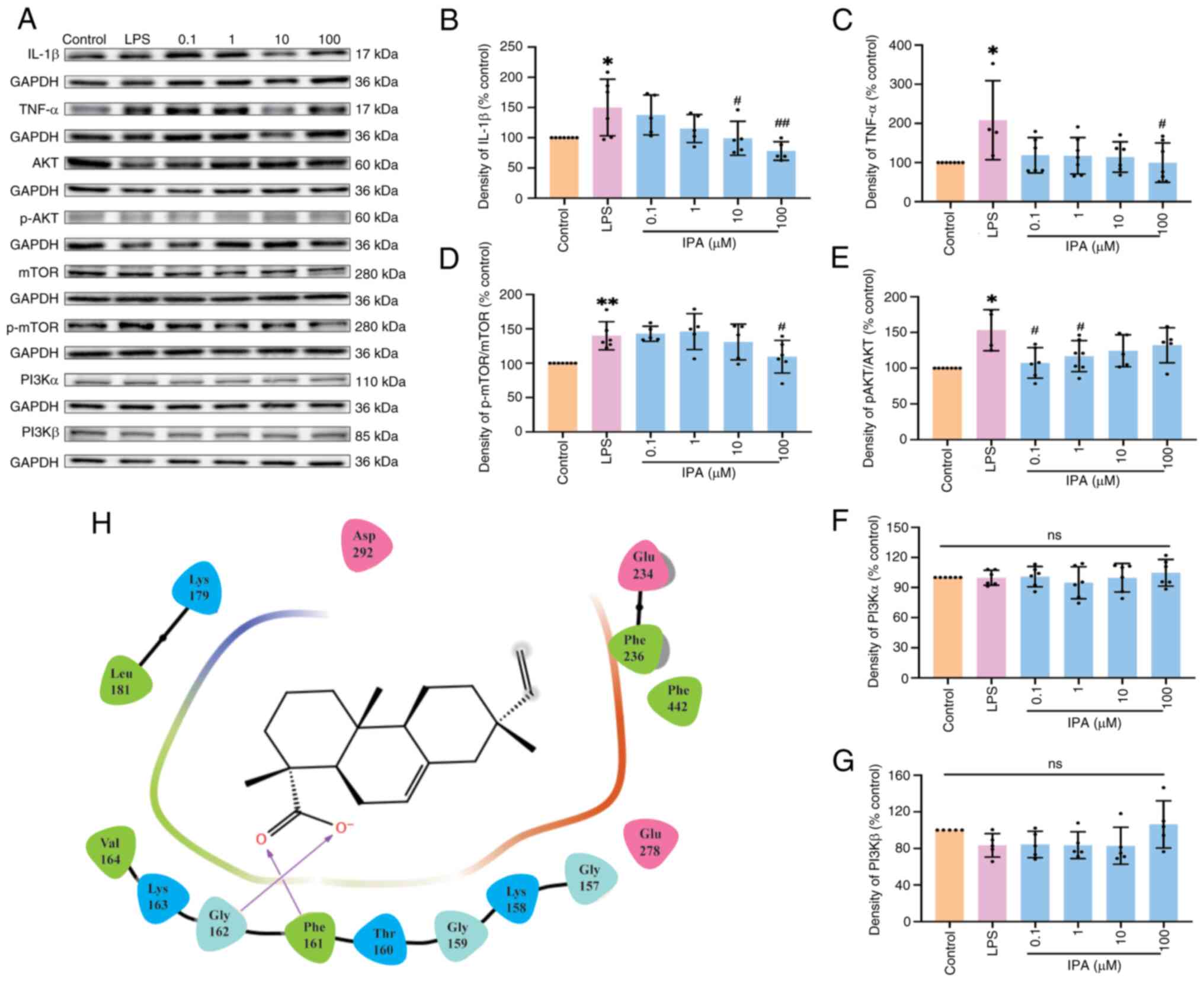|
1
|
Asadi-Pooya AA, Brigo F, Lattanzi S and
Blumcke I: Adult epilepsy. Lancet. 402:412–424. 2023.PubMed/NCBI View Article : Google Scholar
|
|
2
|
Pitkanen A, Ekolle Ndode-Ekane X,
Lapinlampi N and Puhakka N: Epilepsy biomarkers-Toward etiology and
pathology specificity. Neurobiol Dis. 123:42–58. 2019.PubMed/NCBI View Article : Google Scholar
|
|
3
|
Chinese Pharmacopoeia Commission:
Pharmacopoeia of the People's Republic of China. Vol 1. China
Medical Science and Technology Press, Beijing, pp292-293, 2015.
|
|
4
|
Zhang ML, Liu YH and Qu HH: Protective
effect of nanoparticles from Platycladi cacumen carbonisata
on 2,4,6-Trinitrobenzene Sulfonic Acid (TNBS)-Induced Colitis in
Rats. J Biomed Nanotechnol. 18:422–434. 2022.PubMed/NCBI View Article : Google Scholar
|
|
5
|
Zhang HX, Li YY, Liu ZJ and Wang JF:
Quercetin effectively improves LPS-induced intestinal inflammation,
pyroptosis, and disruption of the barrier function through the
TLR4/NF-κB/NLRP3 signaling pathway in vivo and in vitro. Food Nutr
Res. 66(8948)2022.PubMed/NCBI View Article : Google Scholar
|
|
6
|
Fu H, Li W, Weng Z, Huang Z, Liu J, Mao Q
and Ding B: Water extract of cacumen platycladi promotes
hair growth through the Akt/GSK3beta/beta-catenin signaling
pathway. Front Pharmacol. 14(1038039)2023.PubMed/NCBI View Article : Google Scholar
|
|
7
|
Zhang Y, Chen S, Qu F, Su G and Zhao Y: In
vivo and in vitro evaluation of hair growth potential of Cacumen
Platycladi, and GC-MS analysis of the active constituents of
volatile oil. J Ethnopharmacol. 238(111835)2019.PubMed/NCBI View Article : Google Scholar
|
|
8
|
Huo X, Meng Q, Wang C, Wu J, Zhu Y, Sun P,
Ma X, Sun H and Liu K: Targeting renal OATs to develop renal
protective agent from traditional Chinese medicines: Protective
effect of Apigenin against Imipenem-induced nephrotoxicity.
Phytother Res. 34:2998–3010. 2020.PubMed/NCBI View
Article : Google Scholar
|
|
9
|
Zhuang B, Bi ZM, Wang ZY, Duan L, Lai CJ
and Liu EH: Chemical profiling and quantitation of bioactive
compounds in Platycladi Cacumen by UPLC-Q-TOF-MS/MS and
UPLC-DAD. J Pharm Biomed Anal. 154:207–215. 2018.PubMed/NCBI View Article : Google Scholar
|
|
10
|
Ding M, Li J, Zou S, Tang G, Gao X and
Chang YX: Simultaneous extraction and determination of compounds
with different polarities from Platycladi cacumen by AQ
C(18)-Based vortex-homogenized matrix solid-phase dispersion with
ionic liquid. Front Pharmacol. 9(1532)2019.PubMed/NCBI View Article : Google Scholar
|
|
11
|
Shen Y, Shen X, Cheng Y and Liu Y:
Myricitrin pretreatment ameliorates mouse liver ischemia
reperfusion injury. Int Immunopharmacol. 89 (Pt
A)(107005)2020.PubMed/NCBI View Article : Google Scholar
|
|
12
|
Oh TW, Do HJ, Jeon JH and Kim K:
Quercitrin inhibits platelet activation in arterial thrombosis.
Phytomedicine. 80(153363)2021.PubMed/NCBI View Article : Google Scholar
|
|
13
|
Qiu S, Zhou Y, Kim JT, Bao C, Lee HJ and
Chen J: Amentoflavone inhibits tumor necrosis factor-alpha-induced
migration and invasion through AKT/mTOR/S6k1/hedgehog signaling in
human breast cancer. Food Funct. 12:10196–10209. 2021.PubMed/NCBI View Article : Google Scholar
|
|
14
|
Zhang T (ed): Effective Prescription for
Treating Epilepsy. 1st edition. People's Military Medical Press,
Beijing, 1996 (In Chinese).
|
|
15
|
Wang Y, Li C, Xiong Z, Chen N, Wang X, Xu
J, Wang Y, Liu L, Wu H, Huang C, et al: Up-and-coming
anti-epileptic effect of aloesone in Aloe vera: Evidenced by
integrating network pharmacological analysis, in vitro, and in vivo
models. Front Pharmacol. 13(962223)2022.PubMed/NCBI View Article : Google Scholar
|
|
16
|
Tang Y, Li M, Wang J, Pan Y and Wu FX:
CytoNCA: A cytoscape plugin for centrality analysis and evaluation
of protein interaction networks. Biosystems. 127:67–72.
2015.PubMed/NCBI View Article : Google Scholar
|
|
17
|
Sherman BT, Hao M, Qiu J, Jiao X, Baseler
MW, Lane HC, Imamichi T and Chang W: DAVID: a web server for
functional enrichment analysis and functional annotation of gene
lists (2021 update). Nucleic Acids Res. 50(W1):W216–W221.
2022.PubMed/NCBI View Article : Google Scholar
|
|
18
|
Wang J, Sun Y, Zhang X, Cai H, Zhang C, Qu
H, Liu L, Zhang M, Fu J, Zhang J, et al: Oxidative stress activates
NORAD expression by H3K27ac and promotes oxaliplatin resistance in
gastric cancer by enhancing autophagy flux via targeting the
miR-433-3p. Cell Death Dis. 12(90)2021.PubMed/NCBI View Article : Google Scholar
|
|
19
|
Wang Y, Li Y, Liu D, Zheng D, Li X, Li C,
Huang C, Wang Y, Wang X, Li Q and Xu J: A potential
anti-glioblastoma compound LH20 induces apoptosis and arrest of
human glioblastoma cells via CDK4/6 inhibition. Molecules.
28(5047)2023.PubMed/NCBI View Article : Google Scholar
|
|
20
|
Wang Y, Li Y, Wang G, Lu J and Li Z:
Overexpression of Homer1b/c induces valproic acid resistance in
epilepsy. CNS Neurosci Ther. 29:331–343. 2023.PubMed/NCBI View Article : Google Scholar
|
|
21
|
Wang Y, Xiong Z, Li C, Liu D, Li X, Xu J,
Chen N, Wang X, Li Q and Li Y: Multiple beneficial effects of
aloesone from aloe vera on LPS-Induced RAW264.7 cells, including
the inhibition of oxidative stress, inflammation, M1 polarization,
and apoptosis. Molecules. 28(1617)2023.PubMed/NCBI View Article : Google Scholar
|
|
22
|
Livak KJ and Schmittgen TD: Analysis of
relative gene expression data using real-time quantitative PCR and
the 2(-Delta Delta C(T)) Method. Methods. 25:402–408.
2001.PubMed/NCBI View Article : Google Scholar
|
|
23
|
Addie M, Ballard P, Buttar D, Crafter C,
Currie G, Davies BR, Debreczeni J, Dry H, Dudley P, Greenwood R, et
al: Discovery of
4-amino-N-[(1S)-1-(4-chlorophenyl)-3-hydroxypropyl]-1-(7H-pyrrolo[2,3-d]pyrimidin-4-yl)piperidine-4-carboxamide
(AZD5363), an orally bioavailable, potent inhibitor of Akt kinases.
J Med Chem. 56:2059–2073. 2013.PubMed/NCBI View Article : Google Scholar
|
|
24
|
Yang Y, Yao K, Repasky MP, Leswing K, Abel
R, Shoichet BK and Jerome SV: Efficient Exploration of Chemical
Space with Docking and Deep Learning. J Chem Theory Comput.
17:7106–7119. 2021.PubMed/NCBI View Article : Google Scholar
|
|
25
|
Xu J, Li H, Wang X, Huang J, Li S, Liu C,
Dong R, Zhu G, Duan C, Jiang F, et al: Discovery of coumarin
derivatives as potent and selective cyclin-dependent kinase 9
(CDK9) inhibitors with high antitumour activity. Eur J Med Chem.
200(112424)2020.PubMed/NCBI View Article : Google Scholar
|
|
26
|
Ying J, Huang Y, Ye X, Zhang Y, Yao Q,
Wang J, Yang X, Yu C, Guo Y, Zhang X, et al: Comprehensive study of
clinicopathological and immune cell infiltration and lactate
dehydrogenase expression in patients with thymic epithelial
tumours. Int Immunopharmacol. 126(111205)2024.PubMed/NCBI View Article : Google Scholar
|
|
27
|
Smith E, Williamson E, Zloh M and Gibbons
S: Isopimaric acid from Pinus nigra shows activity against
multidrug-resistant and EMRSA strains of Staphylococcus aureus.
Phytother Res. 19:538–542. 2005.PubMed/NCBI View Article : Google Scholar
|
|
28
|
Wu XW, Wang Q, Li Q, Cui YM, Pu YK, Shi
QQ, Bi DW, Zhang JJ, Zhang RH, Li XL, et al: Rubellawus A-D, four
new diterpenoids isolated from callicarpa rubella and Their
Anti-NLRP3 inflammasome effects. Chem Biodivers.
17(e2000798)2020.PubMed/NCBI View Article : Google Scholar
|
|
29
|
Yamamoto K, Ueta Y, Wang L, Yamamoto R,
Inoue N, Inokuchi K, Aiba A, Yonekura H and Kato N: Suppression of
a neocortical potassium channel activity by intracellular
amyloid-beta and its rescue with Homer1a. J Neurosci.
31:11100–11109. 2011.PubMed/NCBI View Article : Google Scholar
|
|
30
|
Wang L, Kang H, Li Y, Shui Y, Yamamoto R,
Sugai T and Kato N: Cognitive recovery by chronic activation of the
large-conductance calcium-activated potassium channel in a mouse
model of Alzheimer's disease. Neuropharmacology. 92:8–15.
2015.PubMed/NCBI View Article : Google Scholar
|
|
31
|
Salari S, Silvera Ejneby M, Brask J and
Elinder F: Isopimaric acid-a multi-targeting ion channel modulator
reducing excitability and arrhythmicity in a spontaneously beating
mouse atrial cell line. Acta Physiol (Oxf).
222(e12895)2018.PubMed/NCBI View Article : Google Scholar
|
|
32
|
Imaizumi Y, Sakamoto K, Yamada A, Hotta A,
Ohya S, Muraki K, Uchiyama M and Ohwada T: Molecular basis of
pimarane compounds as novel activators of large-conductance
Ca(2+)-activated K(+) channel alpha-subunit. Mol Pharmacol.
62:836–846. 2002.PubMed/NCBI View Article : Google Scholar
|
|
33
|
Zaugg J, Khom S, Eigenmann D, Baburin I,
Hamburger M and Hering S: Identification and characterization of
GABA(A) receptor modulatory diterpenes from Biota orientalis
that decrease locomotor activity in mice. J Nat Prod. 74:1764–1772.
2011.PubMed/NCBI View Article : Google Scholar
|
|
34
|
Rong S, Wan D, Fan Y, Liu S, Sun K, Huo J,
Zhang P, Li X, Xie X, Wang F and Sun T: Amentoflavone affects
epileptogenesis and exerts neuroprotective effects by inhibiting
NLRP3 inflammasome. Front Pharmacol. 10(856)2019.PubMed/NCBI View Article : Google Scholar
|
|
35
|
Chang YC, Fong Y, Tsai EM, Chang YG, Chou
HL, Wu CY, Teng YN, Liu TC, Yuan SS and Chiu CC: Exogenous
C(8)-Ceramide Induces Apoptosis by Overproduction of ROS and the
switch of superoxide dismutases SOD1 to SOD2 in human lung cancer
cells. Int J Mol Sci. 19(3010)2018.PubMed/NCBI View Article : Google Scholar
|
|
36
|
Xu M, Yang Y, Peng J, Zhang Y, Wu B, He B,
Jia Y and Yan T: Effects of Alpinae Oxyphyllae Fructus on
microglial polarization in a LPS-induced BV2 cells model of
neuroinflammation via TREM2. J Ethnopharmacol. 302(Pt
A)(115914)2023.PubMed/NCBI View Article : Google Scholar
|
|
37
|
Kashyap MP, Singh AK, Kumar V, Yadav DK,
Khan F, Jahan S, Khanna VK, Yadav S and Pant AB: Pkb/Akt1 mediates
Wnt/GSK3β/β-catenin signaling-induced apoptosis in human cord blood
stem cells exposed to organophosphate pesticide monocrotophos. Stem
Cells Dev. 22:224–238. 2013.PubMed/NCBI View Article : Google Scholar
|
|
38
|
Ravizza T, Scheper M, Di Sapia R, Gorter
J, Aronica E and Vezzani A: mTOR and neuroinflammation in epilepsy:
Implications for disease progression and treatment. Nat Rev
Neurosci. 25:334–350. 2024.PubMed/NCBI View Article : Google Scholar
|
|
39
|
Janson MT and Bainbridge JL: Continuing
burden of refractory epilepsy. Ann Pharmacother. 55:406–408.
2021.PubMed/NCBI View Article : Google Scholar
|
|
40
|
Lin CH and Hsieh CL: Chinese herbal
medicine for treating epilepsy. Front Neurosci.
15(682821)2021.PubMed/NCBI View Article : Google Scholar
|
|
41
|
Lu H, Luo M, Chen R, Luo Y, Xi A, Wang K
and Xu Z: Efficacy and safety of traditional Chinese medicine for
the treatment of epilepsy: A updated meta-analysis of randomized
controlled trials. Epilepsy Res. 189(107075)2023.PubMed/NCBI View Article : Google Scholar
|
|
42
|
Wu J, Cao M, Peng Y, Dong B, Jiang Y, Hu
C, Zhu P, Xing W, Yu L, Xu R and Chen Z: Research progress on the
treatment of epilepsy with traditional Chinese medicine.
Phytomedicine. 120(155022)2023.PubMed/NCBI View Article : Google Scholar
|
|
43
|
Block ML, Zecca L and Hong JS:
Microglia-mediated neurotoxicity: Uncovering the molecular
mechanisms. Nat Rev Neurosci. 8:57–69. 2007.PubMed/NCBI View Article : Google Scholar
|
|
44
|
Hernandez VG, Lechtenberg KJ, Peterson TC,
Zhu L, Lucas TA, Bradshaw KP, Owah JO, Dorsey AI, Gentles AJ and
Buckwalter MS: Translatome analysis reveals microglia and
astrocytes to be distinct regulators of inflammation in the
hyperacute and acute phases after stroke. Glia. 71:1960–1984.
2023.PubMed/NCBI View Article : Google Scholar
|
|
45
|
Butler T, Li Y, Tsui W, Friedman D, Maoz
A, Wang X, Harvey P, Tanzi E, Morim S, Kang Y, et al: Transient and
chronic seizure-induced inflammation in human focal epilepsy.
Epilepsia. 57:e191–194. 2016.PubMed/NCBI View Article : Google Scholar
|
|
46
|
Kumar P, Lim A, Hazirah SN, Chua CJH, Ngoh
A, Poh SL, Yeo TH, Lim J, Ling S, Sutamam NB, et al: Single-cell
transcriptomics and surface epitope detection in human brain
epileptic lesions identifies pro-inflammatory signaling. Nat
Neurosci. 25:956–966. 2022.PubMed/NCBI View Article : Google Scholar
|
|
47
|
Luo C, Koyama R and Ikegaya Y: Microglia
engulf viable newborn cells in the epileptic dentate gyrus. Glia.
64:1508–1517. 2016.PubMed/NCBI View Article : Google Scholar
|
|
48
|
Cui X, Cheng L, Liu Q and Jia Y:
Isolation, identification and HPLC analysis of active component
isopimaric acid in leaves of Platycladus orientalis.
Lishizhen Med Mater Med Res. 15:78–79. 2004.(In Chinese).
|
|
49
|
Michavila Puente-Villegas S, Apaza Ticona
L, Rumbero Sanchez A and Acebes JL: Diterpenes of Pinus pinaster
aiton with anti-inflammatory, analgesic, and antibacterial
activities. J Ethnopharmacol. 318(Pt B)(117021)2024.PubMed/NCBI View Article : Google Scholar
|
|
50
|
Li J, Liu X, Chen L, Zhu X, Yu Z, Dong L,
Zhao X, Zou H, Wei Q, Feng Y, et al: Isopimaric acid, an ion
channel regulator, regulates calcium and oxidative phosphorylation
pathways to inhibit breast cancer proliferation and metastasis.
Toxicol Appl Pharmacol. 462(116415)2023.PubMed/NCBI View Article : Google Scholar
|
|
51
|
Hodges SL and Lugo JN: Therapeutic role of
targeting mTOR signaling and neuroinflammation in epilepsy.
Epilepsy Res. 161(106282)2020.PubMed/NCBI View Article : Google Scholar
|
|
52
|
Hu Y, Mai W, Chen L, Cao K, Zhang B, Zhang
Z, Liu Y, Lou H, Duan S and Gao Z: mTOR-mediated metabolic
reprogramming shapes distinct microglia functions in response to
lipopolysaccharide and ATP. Glia. 68:1031–1045. 2020.PubMed/NCBI View Article : Google Scholar
|
|
53
|
Lai D, Gade M, Yang E, Koh HY, Lu J,
Walley NM, Buckley AF, Sands TT, Akman CI and Mikati MA: , et
al: Somatic variants in diverse genes leads to a spectrum of
focal cortical malformations. Brain. 145:2704–2720. 2022.PubMed/NCBI View Article : Google Scholar
|
|
54
|
Huang XY, Hu QP, Shi HY, Zheng YY, Hu RR
and Guo Q: Everolimus inhibits PI3K/Akt/mTOR and NF-kB/IL-6
signaling and protects seizure-induced brain injury in rats. J Chem
Neuroanat. 114(101960)2021.PubMed/NCBI View Article : Google Scholar
|
|
55
|
Russo E, Andreozzi F, Iuliano R, Dattilo
V, Procopio T, Fiume G, Mimmi S, Perrotti N, Citraro R, Sesti G, et
al: Early molecular and behavioral response to lipopolysaccharide
in the WAG/Rij rat model of absence epilepsy and depressive-like
behavior, involves interplay between AMPK, AKT/mTOR pathways and
neuroinflammatory cytokine release. Brain Behav Immun. 42:157–168.
2014.PubMed/NCBI View Article : Google Scholar
|
|
56
|
Zhao XF, Liao Y, Alam MM, Mathur R,
Feustel P, Mazurkiewicz JE, Adamo MA, Zhu XC and Huang Y:
Microglial mTOR is neuronal protective and antiepileptogenic in the
pilocarpine model of temporal lobe epilepsy. J Neurosci.
40:7593–7608. 2020.PubMed/NCBI View Article : Google Scholar
|
|
57
|
Zhu F, Kai J, Chen L, Wu M, Dong J, Wang Q
and Zeng LH: Akt inhibitor perifosine prevents epileptogenesis in a
rat model of temporal lobe epilepsy. Neurosci Bull. 34:283–290.
2018.PubMed/NCBI View Article : Google Scholar
|
|
58
|
Bai Q, Wang X, Yan H, Wen L, Zhou Z, Ye Y,
Jing Y, Niu Y, Wang L, Zhang Z, et al: Microglia-Derived Spp1
promotes pathological retinal neovascularization via activating
endothelial Kit/Akt/mTOR signaling. J Pers Med.
13(146)2023.PubMed/NCBI View Article : Google Scholar
|
|
59
|
Du M, Sun Z, Lu Y, Li YZ, Xu HR and Zeng
CQ: Osthole inhibits proliferation and induces apoptosis in BV-2
microglia cells in kainic acid-induced epilepsy via modulating
PI3K/AKt/mTOR signalling way. Pharm Biol. 57:238–244.
2019.PubMed/NCBI View Article : Google Scholar
|
|
60
|
Xiao Z, Peng J, Gan N, Arafat A and Yin F:
Interleukin-1β plays a pivotal role via the PI3K/Akt/mTOR signaling
pathway in the chronicity of mesial temporal lobe epilepsy.
Neuroimmunomodulation. 23:332–344. 2016.PubMed/NCBI View Article : Google Scholar
|
|
61
|
Wang P, Nan S, Zhang Y and Fan J: Effects
of GABA(B) receptor positive allosteric modulator BHF177 and IRS-1
on apoptosis of hippocampal neurons in rats with refractory
epilepsy via the PI3K/Akt pathway. Cell Biol Int. 46:1775–1786.
2022.PubMed/NCBI View Article : Google Scholar
|



